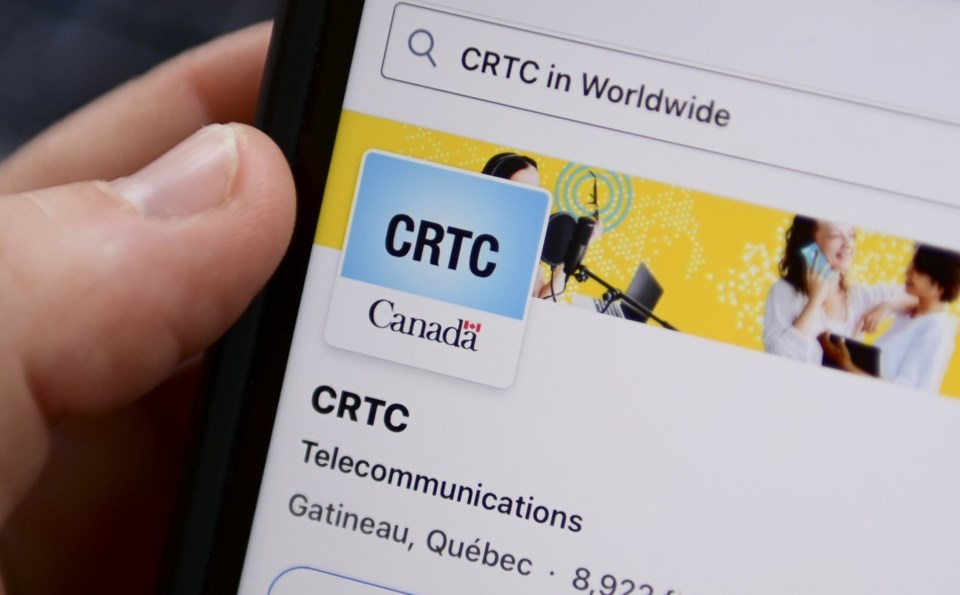CRTC hearing dives into home internet choice, proposal for standardized labels


As Canada’s telecommunications regulator explores potential new rules to help consumers shop for home internet plans, some providers say a proposed “nutrition label” would be overly costly and redundant.
As Canada’s telecommunications regulator explores potential new rules to help consumers shop for home internet plans, some providers say a proposed “nutrition label” would be overly costly and redundant.
Wednesday marked Day 2 of a four-day CRTC hearing, which is part of its consultation on how to help consumers shop for home internet plans. The regulator launched the process in December, saying consumers had complained about difficulties in comparing their options.
The CRTC asked stakeholders to weigh in on what information members of the public need when choosing plans as it seeks to strengthen the “position of consumers in their relationships with service providers,” while identifying associated costs to the companies.
At the heart of the hearing is a proposed requirement for providers to convey relevant information — such as price and speed — to potential customers through a standardized label. The concept has been compared to nutrition labels containing serving size and calorie data, which are required to be displayed on food products in grocery stores.
In the telecom sector, similar rules were recently implemented by the CRTC’s American counterpart.
Since last October, the Federal Communications Commission has required all U.S. internet providers to display “broadband labels,” both in-store and online, which provide “clear, easy-to-understand, and accurate information about the cost and performance of high-speed internet services.”
But there’s been no proof the FCC’s new label requirements have actually helped consumers, nor that consumers in countries without them struggle when shopping for internet services, said Eric Smith, senior vice-president of the Canadian Telecommunications Association.
He told commissioners there’s only a “small set of information that consumers are really looking for,” such as price, term, data limits and speed, and that providers already make this information available, as per rules under the Internet Code.
Smith urged the regulator not to divert “scare resources to replicate something … that already exists.”
“More information is not always a good thing. We all know that you can be inundated with information and it can cause confusion, can cause paralysis in decision-making,” he said.
“You’d be betting with money that could be better served fulfilling other priorities that we know are important.”
Representatives from Bell Canada pointed out the commission’s own transparency report found 87 per cent of Canadians do not have difficulty finding or understanding information when shopping for internet services.
“The evidence before the commission is clear: Canadians are already well-informed and able to compare providers,” said Bell senior vice-president of legal and regulatory Mark Graham.
He added it would be expensive to to put resources toward “implementing a regime that we think is not solving a problem our customers have.”
Instead, Graham recommended the CRTC “really limit the scope” of potential regulation on the issue, which he said could “unintentionally impede our ability” to communicate effectively with customers.
Bell proposed that the commission only mandate providers to list typical download and upload speeds during peak usage periods of the day, along with details around their network technology, on company websites.
But consumer advocates pushed back, questioning why implementing a standardized label would be so onerous to companies already providing similar information on their websites.
“It’s difficult for me to see then what is the opposition to providing it in a way that’s more easily comparable, that allows consumers to do a better job of shopping,” said David Fewer, general counsel at the Samuelson-Glushko Canadian Internet Policy and Public Interest Clinic.
Fewer, whose organization presented alongside internet accessibility advocacy group OpenMedia, said a standardized format would empower shoppers in a way that marketing language might fall short.
“It allows consumers to access that information using tools that are consumer-focused and not driven by a marketing program,” he said.
This report by The Canadian Press was first published June 11, 2025.
Companies in this story: (TSX:BCE)
Sammy Hudes, The Canadian Press




